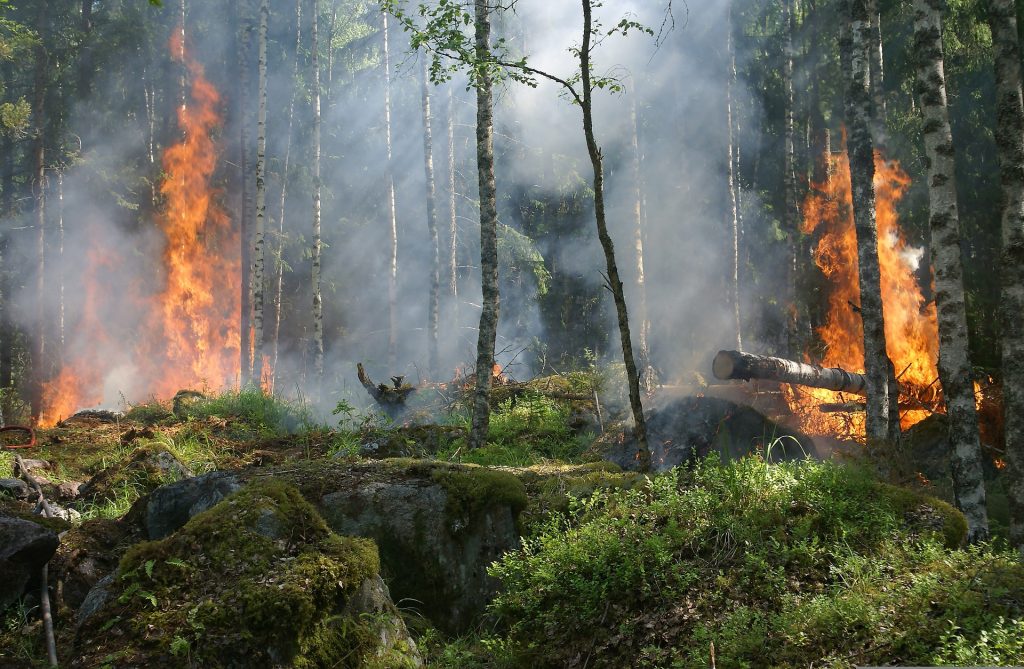Some of us have wondered why experts keep pushing for a reduction in fossil fuel consumption. Why are activists insisting on the development of new technology that will significantly reduce the number of greenhouse gases produced in the world? What are greenhouse gases and why are they such an issue?
In very simple terms, greenhouse gases are those gases that can trap heat in the atmosphere. They absorb heat energy released from the earth and release it back to the earth’s surface. Important greenhouse gases that experts pay a lot of attention to include; carbon dioxide, methane, and water vapor. At different points in the earth’s history, greenhouse gases have occupied the atmosphere in different concentrations. Advanced studies have shown the influence of these variations on climate changes through history. The concentrations of greenhouse gases in the atmosphere are reported to be at alarming levels and experts can establish its link to global climate changes and its possible devastating effects on our planet.
The major greenhouse gases and their sources

Methane, Carbon dioxide, and Water vapor are the three most potent greenhouse gases known to experts. Methane is produced during the production and transportation of natural gas, coal, and oil. Methane emissions also come from different agricultural practices, livestock rearing, decomposition of organic wastes in solid waste landfills, and other activities.
Carbon dioxide is produced naturally from the natural decay of organic matter, aerobic respiration, gas release from volcanoes, and so on. Human activities like burning of fossil fuels, burning of forests, cement production, etc, result in the production of overwhelming amounts of carbon dioxide, exceeding the offsetting capacity of natural carbon dioxide sinks and consequently disrupting the natural balance.
Other types of powerful greenhouse gases like hydrofluorocarbons, sulfur hexafluoride, and so on are produced from commercial and industrial processes in the manufacturing of products and processing of raw materials. They are not produced in large quantities like methane, water vapor, and carbon dioxide but are very potent with global warming potentials ranging from thousands to tens of thousands.
Human activities that contribute greatly to the production of greenhouse emissions include; the burning of fossil fuels for transportation using cars, planes, trucks, trains, and ships. The fuels used for transportation are gotten primarily from petroleum and its combustion contributes a large quota to carbon dioxide emissions.
The worry about greenhouse gases stems from their ability to influence global warming. Global climate changes are influenced by the increasing concentrations of greenhouse gases in the atmosphere which traps more heat and releases it back to the earth’s surface causing changes in weather patterns, dissolving of natural ice reservoirs, flooding, harsh temperatures, and so on which go further to affect agricultural practices, survival of wildlife and other important aspects of human living.
Human activities that promote the production of greenhouse gases
Technological advancements have brought great improvements to the standard of living. However, humans must find a way to mitigate the harmful effects of their activities on the environment if we must survive. Transportation activities, electricity production, industrialization, household activities, agricultural practices, and waste management practices are some of the human activities that contribute greatly to greenhouse emissions across the globe.
The burning of fossil fuels for transportation purposes results in greenhouse emissions. This is slowly turning into a serious area of concern due to the widespread use of petroleum and diesel-fueled cars, and trucks by individuals and public sectors. The second-largest source of methane emissions in the United States is the agricultural sector. Large-scale rearing of livestock, storing of animal manure, land management activities and other agricultural practices also account for significant greenhouse gas emissions.
How do greenhouse gases induce global warming?
The greenhouse effect is a well-known and recognized scientific concept that explains the effect of greenhouse gases on the environment. It refers to the process by which the earth receives radiation from the sun, and releases it back to the atmosphere from where it is released back into space. A natural atmospheric equilibrium maintains the earth’s temperature and makes it habitable for all living things within it.
As explained earlier, greenhouse gases are in the atmosphere and can absorb radiation. They play a major role in the greenhouse effect. At normal concentrations, the greenhouse effect is responsible for sustaining a safe temperature on earth but what happens when the concentration of greenhouse gases in the atmosphere rises to dangerous levels? This is the major cause for concern. Experts report that over the past 60 years, the level of atmospheric CO2 has increased 100 times faster than its previous annual increase rates.
The extreme levels of greenhouse gases in the atmosphere result in the trapping of more heat and a rise in the earth’s temperature.
In summary, if the rate of production of greenhouse emissions is not controlled, experts predict that the devastating effects of global warming which include; rising sea levels, plant and animal extinctions, shifts in climate, and extreme weather will be impossible to prevent.